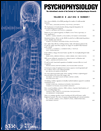
COGNITIVE AFFECTIVE & BEHAVIORAL NEUROSCIENCE
Scope & Guideline
Exploring the Neural Ties: Bridging Cognition, Emotion, and Action
Introduction
Aims and Scopes
- Neural Mechanisms of Cognitive and Affective Processes:
Research focusing on the neural substrates that support cognitive functions such as decision-making, memory, and attention, and how these interact with emotional states. - Translational Neuroscience:
Studies that aim to translate findings from basic neuroscience into practical applications, particularly in clinical settings for disorders such as anxiety, depression, and PTSD. - Behavioral and Electrophysiological Studies:
Investigations utilizing behavioral experiments alongside electrophysiological measures (e.g., ERPs, EEG) to elucidate the temporal dynamics of cognitive and emotional processing. - Computational Modeling and Theoretical Frameworks:
Development and application of computational models to understand complex cognitive and emotional processes, providing a mechanistic view of behavior. - Interdisciplinary Approaches:
Encouragement of research that integrates perspectives from psychology, neuroscience, and behavioral economics to inform our understanding of cognitive and emotional interplay.
Trending and Emerging
- Neurofeedback and Real-Time Brain Imaging:
An increasing number of studies are exploring the applications of neurofeedback and real-time brain imaging techniques, particularly in clinical populations, to enhance cognitive control and emotional regulation. - Impact of Digital Environments on Cognition and Emotion:
Research examining how digital environments, such as social media and video games, influence cognitive and emotional processes is gaining traction, reflecting contemporary societal changes. - Individual Differences and Personalized Approaches:
There is a growing emphasis on understanding individual differences in cognitive and emotional processing, leading to personalized interventions and treatments in mental health. - Transdiagnostic Approaches to Mental Health:
Emerging studies are focusing on transdiagnostic frameworks that address common underlying mechanisms across various psychological disorders, moving beyond traditional categorical diagnoses. - Interdisciplinary Collaboration:
There is an observable increase in interdisciplinary research collaborations, integrating insights from neuroscience, psychology, computer science, and behavioral economics to tackle complex questions.
Declining or Waning
- Traditional Neuropsychological Assessments:
There has been a noticeable decrease in studies relying solely on traditional neuropsychological assessments, as researchers increasingly favor more dynamic and integrated methodologies that combine neuroimaging and electrophysiological measures. - Single Modalities of Study:
Research that focuses exclusively on one modality, such as MRI or behavioral tests, is becoming less common. There is a growing trend towards multimodal approaches that combine various techniques for a more comprehensive understanding. - Static Models of Emotion and Cognition:
The use of static models to explain emotional and cognitive interactions is waning. Researchers are now favoring more dynamic models that account for the complexities and variability of human behavior in different contexts.
Similar Journals

PSYCHOPHYSIOLOGY
Leading the Way in Experimental and Cognitive Psychology.PSYCHOPHYSIOLOGY, published by WILEY, stands as a leading journal in the intersection of psychology and physiology, contributing significantly to our understanding of the brain and body connection since its inception in 1964. With an impressive scope covering areas such as biological psychiatry, cognitive neuroscience, and neuropsychology among others, the journal has earned multiple Q1 rankings in these critical domains as of 2023, reflecting its high impact in the field. The journal ranks particularly well in categories such as Experimental and Cognitive Psychology and neurology, indicating its status as a pivotal resource for professionals and researchers committed to advancing knowledge in psychophysiological studies. Furthermore, with an e-ISSN of 1469-8986, PSYCHOPHYSIOLOGY is accessible to a global audience, although it is not part of the Open Access movement, ensuring that its rigorous research remains a trusted source for academic excellence. By engaging with this journal, readers can expect to discover pioneering research and significant findings that push the boundaries of current understanding, making it an essential publication for those invested in the advancements of psychological and physiological sciences.

Frontiers in Human Neuroscience
Illuminating the Path of Human Neurobiological ExplorationFrontiers in Human Neuroscience is a premier open access journal published by FRONTIERS MEDIA SA, dedicated to advancing the understanding of the complexities of human neuroscience. With an ISSN of 1662-5161, the journal has established its prominence in various fields, achieving a Q2 ranking in categories such as Behavioral Neuroscience, Neuropsychology and Physiological Psychology, and Psychiatry and Mental Health as of 2023. Since its inception in 2008, Frontiers in Human Neuroscience has consistently contributed to the scholarly dialogue by offering a platform for innovative research that bridges the gap between neuroscience and behavioral science. The journal's rigorous peer-review process and commitment to open access ensures that findings are readily available, promoting collaboration and progress within the academic community. With an impact on neuroscience disciplines, it stands at the forefront of the field, inviting researchers, professionals, and students alike to engage with cutting-edge studies and developments. The journal's address is located in Lausanne, Switzerland, where it continues to flourish as a hub for neurobiological exploration.

NEUROSCIENTIST
Connecting Researchers to the Pulse of Neurological AdvancesNEUROSCIENTIST is a leading journal in the field of clinical neurology and neuroscience, published by SAGE Publications Inc. With an impressive impact factor reflected in its Q1 quartile ranking in both clinical neurology and miscellaneous neuroscience as of 2023, this journal positions itself as a crucial platform for the latest research and advancements in the neural sciences. Spanning from 1995 to 2024, NEUROSCIENTIST features a range of high-quality, peer-reviewed articles that cater to researchers, practitioners, and students alike. Although it does not offer Open Access options, the journal remains a vital resource owing to its Scopus rankings, situating it within the top percentile of its categories: ranked #28 out of 400 in clinical neurology and #15 out of 113 in general neuroscience. The journal's commitment to disseminating significant findings underlines its importance in fostering advancements in neurological understanding and treatment.

NEUROBIOLOGY OF LEARNING AND MEMORY
Bridging Neuroscience and Psychology for Deeper InsightsNeurobiology of Learning and Memory is a prestigious journal dedicated to the exploration of the neural mechanisms underlying learning and memory processes. Published by Academic Press Inc Elsevier Science, this journal boasts a strong reputation within the field, as evidenced by its impressive impact factor and high quartile rankings in multiple categories, including Q1 in Behavioral Neuroscience and Q2 in Cognitive Neuroscience. Having provided a platform for groundbreaking research since its inception in 1995, the journal aims to disseminate influential findings that further our understanding of cognitive processes, shaped by robust empirical studies and theoretical developments. Researchers and professionals in neuroscience, psychology, and related disciplines will find invaluable insights and advancements that underscore the journal's commitment to fostering knowledge and innovation within these fields. While it currently operates under a subscription model, its comprehensive coverage of crucial topics positions it as a vital resource for those engaged in the intricate study of learning and memory.

LEARNING & MEMORY
Pioneering Research in Cognitive NeuroscienceLEARNING & MEMORY is a prestigious journal dedicated to the expansive field of neuroscience, focusing specifically on the intricate mechanisms underlying learning processes and memory formation. Published by COLD SPRING HARBOR LAB PRESS, PUBLICATIONS DEPT, this journal has established itself as a critical platform for research since its inception in 1994, with an anticipated convergence until 2024. With a notable impact factor in the realms of cellular and molecular neuroscience, cognitive neuroscience, and neuropsychology, it proudly ranks in the top quartiles of these disciplines. Although the journal is not open access, it remains a vital resource for scholars seeking to leverage cutting-edge research to advance their understanding of cognitive processes. Those engaged in the fields of psychology and neuroscience will find LEARNING & MEMORY to be an essential source for empirical studies, theoretical reviews, and methodological advancements, making it indispensable for researchers, professionals, and aspiring students alike.

Neuropsychological Trends
Transforming Understanding through Multidisciplinary DialogueNeuropsychological Trends is a prominent, open-access journal published by LED EDIZIONI UNIV, based in Italy. Since its inception in 2007, the journal has dedicated itself to advancing research in the fields of neuropsychology and cellular neuroscience, catering specifically to the evolving trends shaping these disciplines. With the ISSN 1970-321X and an E-ISSN of 1970-3201, the journal provides a platform for multidisciplinary dialogue and exploration of neuropsychological phenomena. While ranked in the fourth quartile for both Cellular and Molecular Neuroscience and Neuropsychology and Physiological Psychology categories in 2023, the journal encourages innovative research that aims to enhance understanding and treatment of cognitive and psychological conditions. The convergence of years from 2011 to 2024 marks a significant period for contributions that inform clinical practice and theoretical frameworks. As researchers, professionals, and students engage with cutting-edge studies and reviews, Neuropsychological Trends serves as a vital resource for staying informed and fostering collaboration in the neuropsychological community.

Annals of Neurosciences
Unlocking the Mysteries of the Brain and MindAnnals of Neurosciences, published by SAGE Publications Ltd, is a distinguished journal that serves the vibrant field of neuroscience. With an ISSN of 0972-7531 and E-ISSN 0976-3260, it has been a significant platform for advancing knowledge in various aspects of neuroscience since its inception. The journal, positioned in the Q3 category in the realm of neurosciences (miscellaneous) as of 2023, aims to bridge the gap between basic research and clinical practices, providing a comprehensive forum for the dissemination of innovative research, reviews, and insights within the field. With a convergence period from 2011 to 2024, it continually emphasizes the importance of interdisciplinary approaches in understanding neural mechanisms and their implications for mental health and neurological disorders. The journal's open access options ensure that research findings are widely available, fostering collaboration and dialogue among researchers, professionals, and students globally. Located in London, England, the Annals of Neurosciences stands out as an essential publication for those aiming to stay at the forefront of neuroscience research and application.

Frontiers in Behavioral Neuroscience
Advancing Insights into Mind and Behavior.Frontiers in Behavioral Neuroscience is a distinguished journal published by FRONTIERS MEDIA SA, specializing in the intricate relationship between behavior and the underlying neural processes. Established in 2007, this Open Access journal, based in Switzerland, aims to disseminate high-quality, peer-reviewed research that spans both Behavioral and Cognitive Neuroscience, as well as Neuropsychology and Physiological Psychology. With an impressive ranking in the top quartiles of these categories—Q2 in Behavioral and Cognitive Neuroscience and Q1 in Neuropsychology—this journal plays a pivotal role in advancing the understanding of complex behavioral phenomena through a neuroscientific lens. The journal's commitment to open accessibility ensures that groundbreaking findings are available to a wide audience, facilitating collaboration and innovation within the scientific community. As the field continues to evolve, Frontiers in Behavioral Neuroscience remains at the forefront, supporting researchers, professionals, and students alike in their pursuit of knowledge and understanding in this dynamic discipline.

JOURNAL OF EXPERIMENTAL PSYCHOLOGY-GENERAL
Elevating Standards in Psychological ScholarshipJOURNAL OF EXPERIMENTAL PSYCHOLOGY-GENERAL, published by the American Psychological Association, is a leading journal in the field of experimental and cognitive psychology. With an ISSN of 0096-3445 and a robust impact factor that reflects its significant contribution to research, this journal serves as a premier outlet for empirical studies that advance our understanding of psychological processes across development and cognition. Covering a wide array of topics from developmental neuroscience to general psychology, it is categorized in the Q1 quartile across multiple fields, making it a vital resource for researchers, professionals, and students alike. The journal has maintained a consistent publication record since its inception in 1975, continuously freeing insights that shape the future of psychology and related disciplines. With rigorous peer review and high standards of scholarly excellence, JOURNAL OF EXPERIMENTAL PSYCHOLOGY-GENERAL remains an essential platform for disseminating innovative psychological research.

Neuropsychologia
Connecting Dots Between Mind and Brain for Over 60 YearsNeuropsychologia, published by PERGAMON-ELSEVIER SCIENCE LTD, is a premier journal that delves into the intersections of psychology and neuroscience, specifically focusing on behavioral and cognitive processes. Since its inception in 1963, this esteemed journal has been a vital platform for researchers, professionals, and students, showcasing innovative studies and advancements in the fields of Behavioral Neuroscience, Cognitive Neuroscience, and Experimental Psychology. With a commendable impact factor, placing it in the Q2 category across multiple disciplines, Neuropsychologia is recognized for its contribution to the scientific community, ranking among the top journals in both Experimental and Cognitive Psychology and Neuroscience. The journal's commitment to excellence is evident in its rigorous peer-review process and its mission to disseminate cutting-edge research, making it an invaluable resource for those seeking to expand their knowledge and insights in neuropsychology. For further reading, the journal is accessible in both print and digital formats, ensuring that researchers can easily engage with the latest findings and theoretical advancements in this dynamic field.